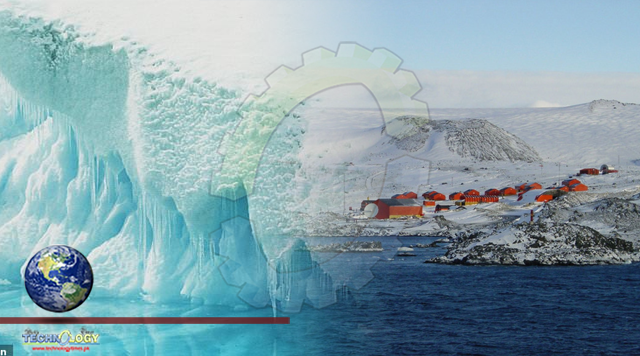Over the past 50 years, 87 percent of glaciers on the western side of the Antarctica Peninsula have retreated, particularly in the past decade.

By Matthew Cappucci
On Feb. 6, 2020, the mercury stood at 64.9 degrees Fahrenheit on a thermometer at Esperanza Base on the Trinity Peninsula at Antarctica. After more than a year of investigation, scientists with the World Meteorological Organization have confirmed the reading as accurate, establishing a new all-time temperature record for the world’s coldest continent.
At the same time, the agency rejected an even hotter temperature reading of 69.4 degrees taken at a Brazilian research station, citing improper measuring techniques and faulty equipment.
The World Meteorological Organization’s Weather and Climate Extremes Archive is responsible for adjudicating potential records to ensure consistency and legitimacy.
The announcement of their findings, which occurred Thursday morning, comes during the same week as a blistering, unprecedented heat wave scorches the Pacific Northwest and British Columbia, establishing a new all-time national record high in Canada three days in a row. On Monday, Lytton, British Columbia hit 121 degrees.
The 2020 reading in Antarctica beat out the previous record of 63.5 degrees, which occurred March 24, 2015. Multiple stations recorded temperatures approaching or exceeding 60 degrees during the multiday event, which resulted from a combination of warm high pressure, broad sinking air and a “foehn” wind. The latter describes a downsloping breeze, or winds sliding downhill, which have a tendency to warm as they slosh into interior valleys.
Esperanza Research Station, where the record reading was observed, is an Argentine research station used for studies in glaciology, meteorology, climate science, seismology, and oceanography. Winds at the base can exceed 130 mph in the wintertime. Three mountains — Taylor, Witten and Flora — tower to about 1,700 feet and overlook the base.
Over the past 50 years, 87 percent of glaciers on the western side of the Antarctica Peninsula have retreated, particularly in the past decade. Temperatures during that time frame have warmed roughly 5 degrees on average, but some scientists were initially hesitant to pin the record on climate change alone, citing dramatic year to year variability in summer temperatures.
Esperanza Station’s weather observations are collected by Argentina’s Servicio Meteorológico Nacional, and were quickly deemed accurate.
Randy Cerveny, a professor of atmospheric sciences at Arizona State University and rapporteur on extreme records for the World Meteorological Organization, says that most investigations into possible major records take at least half a year to complete.
“Normally, these investigations last 6 to 9 months,” wrote Cerveny in an email to The Washington Post. “It varies depending on the circumstances, including such things as availability of data, testing of equipment, etc. For example, we are only just now expecting independent lab testing results of the Death Valley temperature sensor that recorded the 130-deg temperature last August. Good science takes time.”
Cerveny said that most review committees are made up of about a dozen scientists, in this case from Argentina, Brazil, New Zealand, Spain, the United Kingdom and the United States. Some committees can feature more or fewer.
The World Meteorological Organization also reviewed a second potential candidate for Antarctica warmest temperature ever recorded — a 69.4 degree report from a Brazilian permafrost monitoring station located on Seymour Island at the tip of the Antarctic Peninsula.
That reading, which came three days after the confirmed 65-degree temperature at Esperanza Base, was met with skepticism from the team. Ultimately, the reading was discounted.
The weather station behind the number is used for permafrost research. While the outfitting of the station is sufficient for those purposes, Cerveny’s committee found that a repair made to the station jeopardized air temperature measurements.
An “improvised” radiation shield, which blocks direct sunlight from striking the temperature sensor, contributed to a “demonstrable thermal bias,” making the temperature readings unreliable. Still, the reading can qualitatively be taken to support widespread warmth during the early February 2020 Antarctic heat event.
Cerveny expressed concern that some media outlets jumped the gun on the original reporting the unverified 69.4 degree temperature, failing to list it as provisional and, as the World Meteorological Organization wrote, “[sensationalizing] and [mischaracterizing] potential records before they have been thoroughly investigated and properly validated.” In the end, the record was discarded — rendering hundreds of articles published last February incorrect.
“The importance of making sure records are legitimate is so that we can ensure, for example, that future model calculations, future policy considerations, and any future weather theory modifications are made using the absolute best data that we have available,” he wrote.
To that end, the World Meteorological Organization will be establishing a “rapid response team,” tasked with providing guidance to world media once a provisional record enters the news cycle.
“There is an old computer person’s adage of ‘garbage in, garbage out’ that applies here,” wrote Cerveny. “We at the [World Meteorological Organization] go to extraordinary lengths to make sure that the observations that we are evaluating were made in the best possible manner using the best possible equipment.”
Originally published at The seattle times